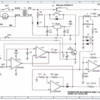@F Maguire posted:Gunrunner-- Sorry to be so long in reply... I see that late Saturday night seems to be the only time I have to spend on the computer except for chores like taxes and today my wife cannot renew her car registration on line (our DMV requires reservation) because in 1967 she did not obtain a passcode.
Tell me which state that is, because I never want to move there. ![]() In PA we just go on-line and enter the VIN number of the car and we can renew our registration. I never had a passcode, and I never needed one.
In PA we just go on-line and enter the VIN number of the car and we can renew our registration. I never had a passcode, and I never needed one.
@F Maguire posted:So I see a certain time parallel in this to the two Lionel "brick" transformers, 135 va and 180 va. You are quite right that the 180-watt unit has an elaborate control circuit, while the earlier 135-w unit did not have anything near this elaborate. However, it did have a rudimentary circuit to open its 10 A (rated) relay (not a breaker).
Too bad I sold my PH135's, because I had one open and it had nothing but the circuit breaker, it was an ordinary thermal breaker. I saw no PCB of any kind in there. I have no idea the vintage of the ones I had, I bought them well used. However, I didn't like the poor circuit protection and I sold them.
@F Maguire posted:I made an assumption that the two circuits I saw in the older 180-w were both timers, one on the plus phase and one on the negative phase. Now I think I should look more carefully at them--possibly only one was a timer, and revise the previous post. --Frank M
The PH180 circuit has two sensing circuits for the overload. One reacts to a sudden spike in current and will cause an immediate trip, the other has a longer delay to allow the transformer to ride out a temporary power surge, say starting up a couple of MU'ed dual Pulmore motored locomotives. You can actually demonstrate this on the bench if you have the proper equipment. I use a huge heater for an industrial oven as a resistive load to test transformers. On an immediate overcurrent of around 12 amps or more, the PH180 will trip instantly. However, if you ramp up the overcurrent slowly, it'll give you several seconds before it trips.
The late Dale Manquen actually posted this years ago, and it explains the operation as well as I've ever seen elsewhere.
In the schematic, both U1b and U1c are amplifying the current sense signal. U1c, the "overload" detector, has a gain of 148, but it is slowed down by the resistor and capacitor on its output. The time constant (RxC) is 2.6 seconds. Multiple short hits to this RC combination would charge it up until it trips the relay latch.
U1b has a gain of 37, which means it requires 4 times as much current, but it acts instantaneously for "dead short" situations.






